
Abby volunteered in India for 4 months, teaching English and living with a host family. Below, in her diary entries, she tells of her Lattitude Global Volunteering experience from the beginning, about her day to day life as a volunteer, what teaching is really like, and about the people she met that made her experience what it was.
- Arrival in India

Arrival in Calcutta
I have arrived in Calcutta, India, along with my fellow group of 10 Lattitude Global Volunteering volunteers where were met by our Country Representative, Uma, and taken to our hostel where we will stay for 5 days. It’s very hot and noisy here and the streets are packed with children, dogs, people, rickshaws, and cars honking their horns. It is monsoon season, and although it wasn’t raining when we arrived, after food at the hostel (2 bananas, an egg and a piece of bread) and a quick shower, we stepped out again to find the road deep in 5 inches of muddy water! So we took a rickshaw…
- Orientation
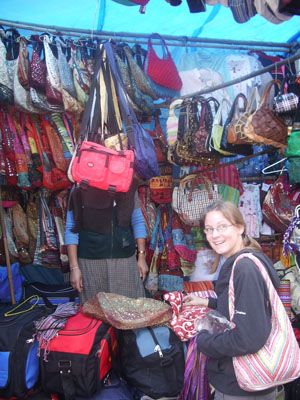
Orientation
We have spent 5 days in Calcutta on orientation where we have travelled by bus, tram, auto rickshaw, cycle rickshaw, man-pulled rickshaw and foot. We have tried out our haggling skills it the markets and got a sense of the money (you can by a bus ticket for 5 rupees – approximately 14p!!) We have bought Indian clothes, the traditional salwah kamese, which are really beautiful and colourful, been Indian dancing and eaten lots of curry already! I am beginning to get used to the bustle of the city and the people staring us wherever we go.
- Arrival on placement

Arrival on placement
We are here! After a 12 hour sleeper train journey (squashing onto narrow 3 tired bunks - my bunk was in the actual train corridor!) we arrived in Siliguri where the rest of our volunteer group were taken by mini bus up to Darjeeling and beyond, where their placements were. My project partner, Laura, and I were met by our host Mr Thapa who took us the 2 hour drive up the mountain to the school. Our journey was slightly delayed by a puncture which they fixed there and then, changing the wheel on the side of the road – more precisely on a non-barriered hair pin bend! On our arrival into the small village of Ghayabari, we were greeted by all the school children lining the road, all holding banners saying ‘welcome GAP volunteers’ and with small posies of flowers, and the traditional peach coloured scarves for us. The school is a blue and white tumbledown building on the side of the road, almost falling off the hillside.

Blue Diamond School
The classrooms are on the top floor, with the kindergarten classrooms, office and bathroom on the ground/middle floor. Laura and I are to share a bedroom beneath this level, next door to the 9 boarding children’s shared bedroom, and the kitchen. Out the back of the school is a small patch of brown dust with a guava tree - the playground. The famous Darjeeling toy train runs right outside the front door, the tracks within arms reach so we can hop on and off whenever we like!
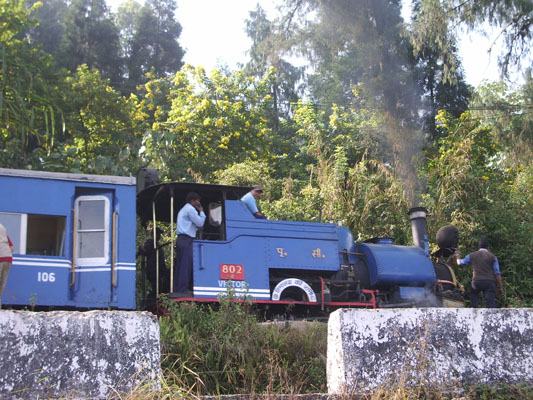
Darjeeling Toy Train
Our welcome was so lovely, we were given a special orange drink in sugar coated glasses and had to shake hands with almost everyone in the school and the children presented us with a show they’d prepared with traditional Nepali songs and dances.
- Lessons
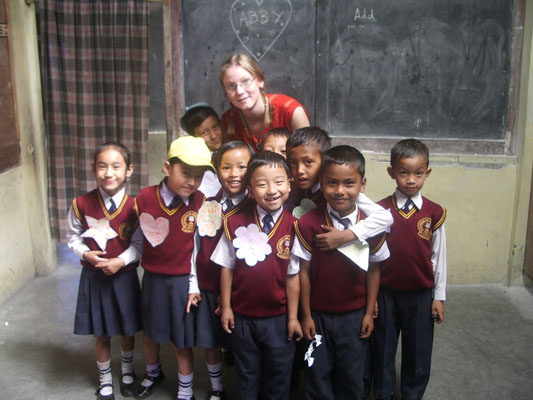
Class 2
We teach all classes from nursery and kindergarten (3 – 4 year olds) up to Class 9 (15 – 16 year olds) and our main focus is English. We spent our first week observing lessons and seeing what level the children were at and getting ideas about what we might do.
Our first lesson with nursery and kindergarten, however, was somewhat of a disaster… These two classes share one room so Laura and I decided to teach them together. The children sit in rows on small wooden benches with adjoining wooden desks and during their normal lessons, and are taught to learn by rote. This means that teacher stands at the front pointing with a stick at the blackboard and saying ‘A, B, C’ and the children stand and repeat in unison: ‘A, B, C’. At intervals, the teacher would have a child to the front to do the leading (this is a 3 or 4 year old, bear in mind!) and should they get say a letter or word wrong, she would smack them with the cane.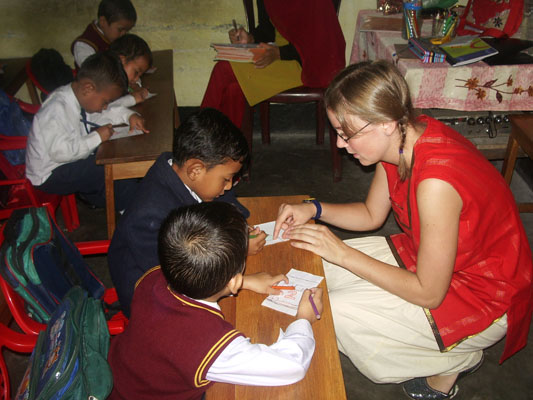
Teaching Kindergarten
Of course, Laura and I, understandably, were quite shocked by this (but had to accept that this is the Indian way of teaching) but noticed how really these small children did not have much fun. So, on our first lesson we thought we’d take them out into the playground and play some games. However, once we got the children down to the playground, they went wild! The ran around and screamed and laughed and went generally crazy like animals let out of a zoo and there was absolutely nothing we could do, they ignored us completely! So it wasn’t the best of successes, teaching wise, but at least they got some exercise!
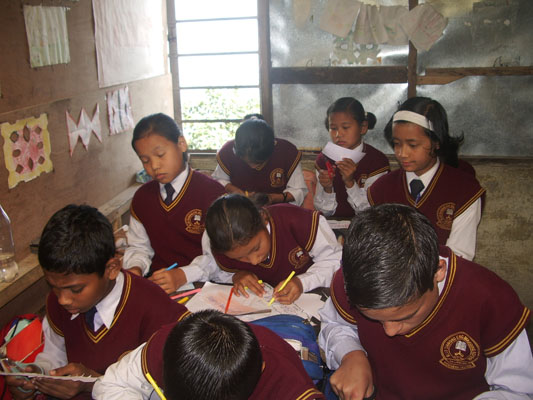
Class 6
- Food
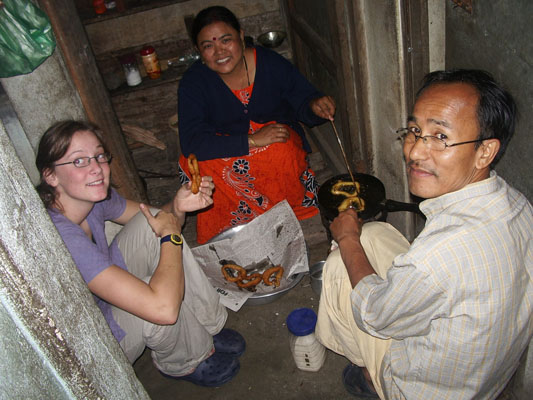
Cooking selroti
The food here is simple: rice, rice and more rice! Actually, that’s not strictly true. For breakfast we have chapattis with whatever has been left from supper the night before. We eat breakfast at 8am with Mr Thapa before he goes to work at the Post Office and we start lessons at 9. Lunch is then at 12:30 and consists of boiled rice, a watery yellow daal, and some mild curried pumpkin (as they grow them on the roof). Additional extras vary from day to day such as deep fried slivers of potato, a bit like tiny chips (yum) and some indeterminate green vegetable boiled down to a sludge (disgusting!). For supper we then have more boiled rice, the same daal, and then sometimes either fish or goat (I don’t like either!) and an added extra as per lunch. We don’t have supper until 9pm though, by which time we are unsurprisingly starving, so we have taken to going for a walk into the village after lessons, about 5, and buying roasted nuts in paper cones from the man who roasts them outside his little house, or packets of biscuits or chocolate from the shop up the road (these are usually out of date as there are so few people in the village they never sell enough to replenish their stocks!), so we survive quite well. My favourite food is selroti (which are a bit like doughnuts) which they make on special occasions.
- Family
I now have a whole new family: Mr Thapa, Mrs Thapa, their two sons Pranit and Anurag, Kamna (the 15 year old girl who does the cooking and washing here) and the 9 boarding children who live here with us.

My Indian family
The two youngest boarders, Ruby and Rahul are only 3 years old and we spend a lot of our free time with them and the others, playing games outside, teaching them card games, drawing pictures and entertaining in any way we can think of. Recently we found an old sheet and some paint and made a giant twister board with them. They have also taught us their game called ‘dice’ where you throw a special dice and have to guess what side it’ll land on. We have taught them our songs and they have taught us theirs – we now have to perform out Nepali duet any time we go out to visit people! Mr and Mrs Thapa have taken us to visit their relatives down in the valley and in different villages – these visits are quite fun except mostly involve us having to eat large platefuls of food whilst being closely watched by the hosts, as they like to see us eat!

Laura and I with some of the boarders
- Teaching moments/memories
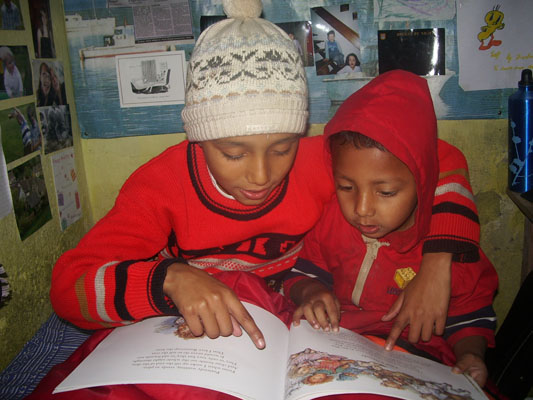
Reading time
We are now well into our teaching routine and I am thoroughly enjoying it. We teach between 5 -7 out of 7 lessons per day. Teaching these kids is so much fun, they are so enthusiastic and lively and willing to learn. For different classes I come up with different ideas as I have come to know the kids so well, each by name (this was quite tricky in the beginning as nearly everyone’s surname is ‘Thapa’, ‘Lama’ or ‘Rai’ and when I asked names they would say their full name, really fast, so it was very hard to understand!)
With Class 8, there are only 3 of them and they are quite far behind in their speaking skills, so I decided to create a puppet show with them, to have some fun and get them talking. I chose ‘The Three Little Pigs’, and got them to design and make the puppets themselves. We then learnt our parts and practised it until we were ready to perform in front of the school, using a sheet draped over an upturned desk as a puppet theatre – I was really proud of their performance and I think they were too.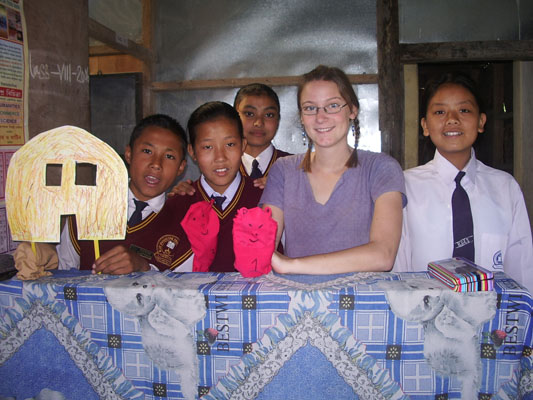
Class 8 with their puppet show
With Class 3, one of my favourite yet more rowdy classes – there was about 23 of them, all crammed into their tiny box of a classroom, I have begun to teach clock time and we started out by making our own clocks using paper plates and split pins (the classic primary school activity!). However, they still needed more practise telling the time so I made some giant numbers on pieces of paper and took the children outside. In the playground we made a circle, and I distributed the numbers around the ‘clock’ with the extra children making the ‘hands’. I then either called out a time and they had to make it in formation, or I moved them into a time and they had to tell me what it was. It was more challenging then I realised but they rose to it and started making their own times for me to guess!
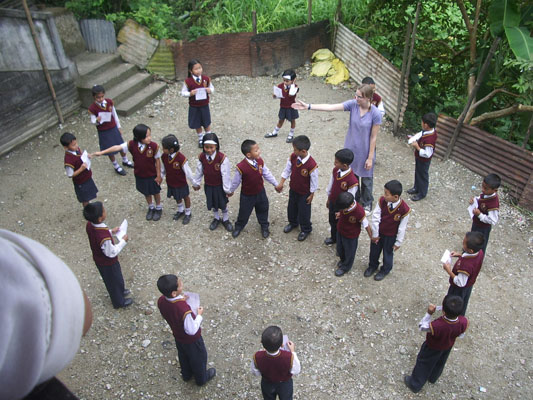
My human clock
- Life in general
We have been here 2 months now and yet it feels like we’ve been here forever, everything is so familiar and comfortable and we have all our routines and work well in place. We have been twice to teach in the two Blue Diamond Branch Schools, in the valleys either side of us.
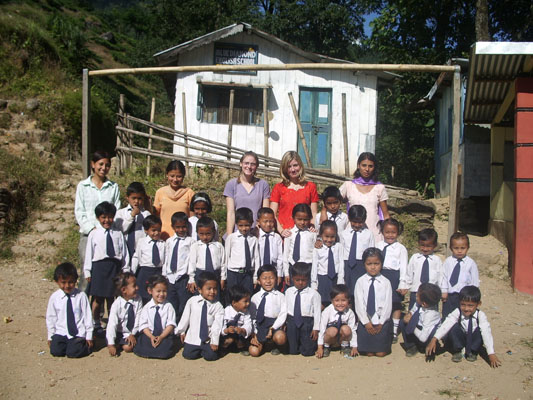
One of the branch schools
Neither have road access, electricity or running water and take about a 2 hour walk to reach. The children are so friendly and fun though, and we played games and sang songs with them and took some books with us that we had sent from England. It was amazing to see how they manage to teach with almost no facilities and materials at all, and yet the children were really beginning to grasp English and were fantastic to work with. We also went to stay with some of Mr Thapas relatives in one of the villages for a night which was certainly an experience as the whole family (including 2 children, an Aunt and a grandmother) and us slept in one room and went to bed at 7pm when it got dark and got up with the sun at 5am!

Playing games with the children
- Leaving
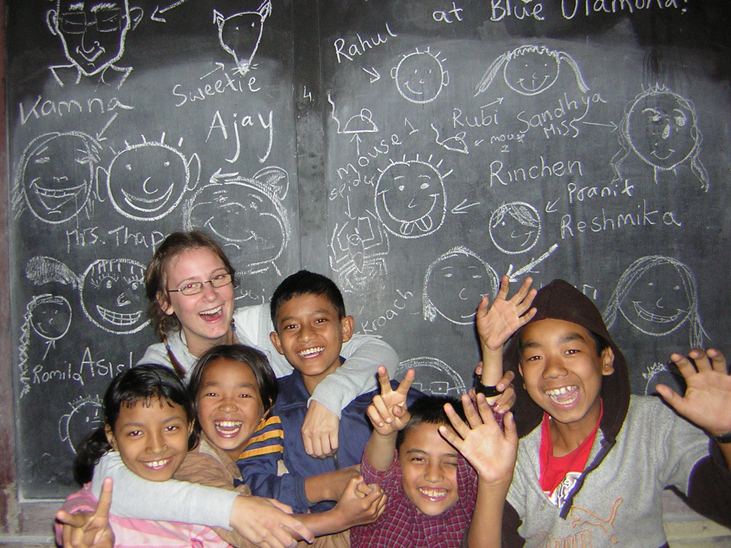
Me and some of the boarders
Saying goodbye and leaving my placement has been the hardest thing I have ever had to do. This family is like my family, I am so close to so many of the children and Laura and I have been on such an incredible journey these past 4 months that I can’t find the words. We shall take away so many memories (and photos!) and some things I will never forget. There was the time we had a midnight feast with the boarders, all crammed into our bedroom, and the time it rained for a week and we had no electricity and Class 3 and I had a singing competition to see who could sing louder than the sound of the rain on the corrugated iron roof (I’m not sure the other teachers appreciated this…!) and the time we saw the sun rise at 5am and saw a stuning view of the distant Himalyas. There was the success of Laura’s choir and my Drama club’s play, and the lesser success of us learning Nepali (because they couldn’t stop laughing at our attempts at basic sentences!). I have hundreds of letters to take away with me which will remind me of the children and family that made this experience the best time of my life. And most of all I remember laughing more than I ever have before.
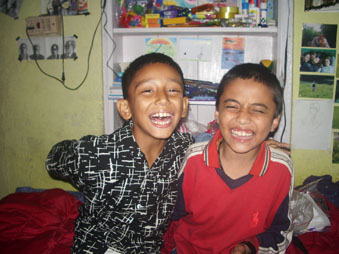
So much laughter
- Travelling after my placement
When I first arrived here, I remember thinking ‘ I have no idea how to get back, or even how to catch a bus to the next village’ and yet 4 months later I felt fully prepared to travel through India. Laura and I planned to travel through India for a month before flying home and took a train from Siliguri (North East India) to Bangalore (South India) which took 3 days and cost us all of £5! We then went to Goa for Christmas on the beach as the rest of our volunteering group were going to be there, and we slept in a tree house which was quite cool! We then went to Mumbai for New Year and then up to Rajasthan (North West India) to see the Red City (Jaipur), the Blue City (Jodphur) and the Golden City (Jaisalmur).
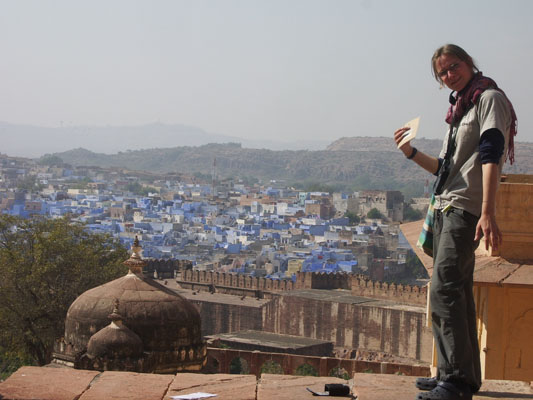
The blue city at Jodphur
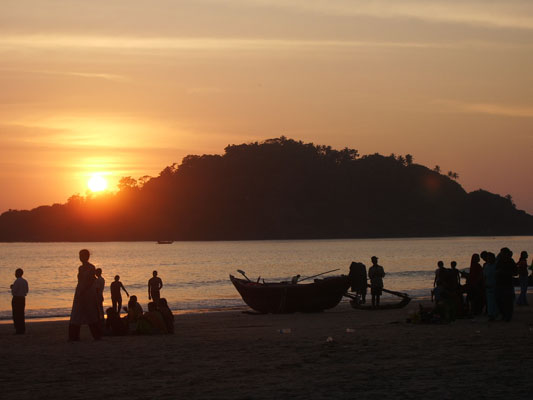
Beach in Goa
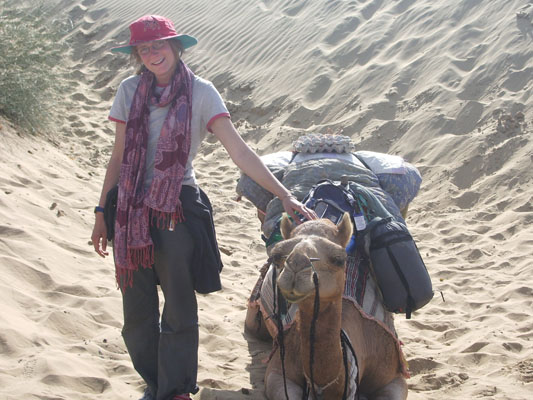
Camel trekking in the desert
We then took a 3 day camel trek into the desert and then returned to Calcutta, a week before our flights home, and spent the time volunteering in a Mother Theresa orphanage for children with TB where I was allocated the lovely task of washing all the cloth nappies (!), as well as feeding and playing with the children.

Volunteering at a Mother Theresa project
A week after living in Calcutta I was more than ready to bid farewell to our grimy hostel where the paint peeled from the damp walls and cockroaches lurked in the bathroom, and finally fly home to see my family. Travelling was fun although I missed my placement and so was quite ready to go home when the time came.

